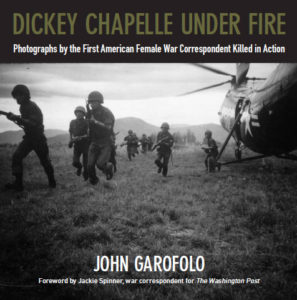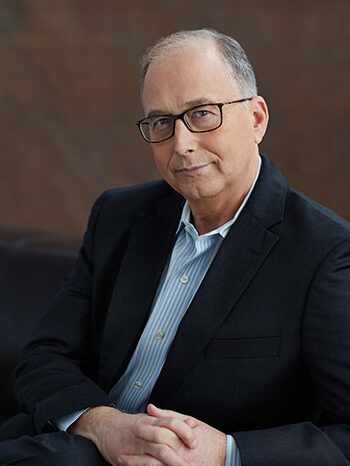JOHN GAROFOLO, a former entertainment industry executive, is currently assigned as a Coast Guard liaison to the Defense Department. A veteran of Operation Iraqi Freedom, Garofolo provided security and escorted members of the international media into Iraq during the initial phase of the war. He is the author of the critically acclaimed Dickey Chapelle Under Fire: Photographs by the First Female American War Correspondent Killed in Action (Wisconsin Historical Society Press, 2015), which since its release has been featured on PBS NewsHour, Time.com, As If Magazine, BBC Radio, the Washington Post, and other national media.

What drew you to writing this book?
I’ve been working on Dickey Chapelle’s story for quite some time; I first learned about her 25 years ago. I was shocked that I had never heard about her before. She reported not only from Vietnam, but also from Iwo Jima and Okinawa during World War II. I was convinced that her story would make a great movie. So I’ve put a considerable amount of time and effort into trying to crack the code on a Chapelle screenplay. Several years ago I realized that there had never been a book solely dedicated to her photographic work, which coincided with the Wisconsin Historical Society Press’s interest in doing a Chapelle book timed for the 50th anniversary of her death in Vietnam.
What kind of research do you do, and how much research do you do before you begin writing?
I don’t limit myself to any particular methodology, other than to try and find everything I can, which, in some cases, is certainly limited by the material that’s actually available. Since I have a film and television background, I don’t ignore any audiovisual material I can find. With this book, I had the advantage of the publisher having the Chapelle archive, which holds a substantial amount of her unpublished work, notes, drafts, personal correspondence, and many photographic images. Since I’ve worked closely with the family on the film and television rights, they were willing to share personal materials, which were not part of the archive. I also interviewed the late Mike Wallace of CBS News, who had interviewed her in the early 1960s.
How long did you work on this book?
Not including the first 22 years, once the book contract was in place I had a very tight deadline to get the first draft to the publisher, which included the photo selections and captions, rights clearances, et cetera. I had about six months to get that in. Then I went back to the archive to review the photographic material and contact publishers that had some of Chapelle’s work that wasn’t in the archive. Including rewrites, copy edits, meetings and discussions with the editor, and galley review, it was about a 15-month process to get the book to final production.
What inspired you to write this book?
I really believe Dickey Chapelle’s story is one that should be much better known that it is. I find it an injustice that someone with her career—reporting on wars all around the world—is virtually unknown. Shortly after she died, writer and military historian Brigadier General S. L. A. Marshall wrote a piece that asked the question about why real fame eluded Dickey Chapelle. Marshall said that no male war correspondent had a comparable record. He went so far as to write: “Most of the time the men got the glory and the bylines, while she was doing things the hard way…she had the stark, steady courage they lacked.” I’d like to make sure she has the recognition she truly deserves.
What’s your favorite underappreciated nonfiction work?
I recently moved and haven’t unpacked all my books, so this list could easily change once I actually get to serious unpacking because I don’t have an all-time favorite of one. I am looking forward to finding and finishing Tom Ricks’s The Generals. I should also mention the recently released A Companion to the War Film, edited by Doug Cunningham and John Nelson, from Wiley Blackwell. (For full disclosure, I should mention that I wrote a chapter for this.) I’m looking forward to reading what my fellow film scholars have written. And finally, in the same vein, I like Jeanine Basinger’s The World War II Combat Film: Anatomy of a Genre.
What’s next for you? What are you working on?
Thanks for asking. I usually separate my work into creative work and the more academic/scholarly work. So on the creative writing side, I’ve been on working on a Chapelle stage play, thanks to a grant from the Brico Fund through the Milwaukee Press Club. The Milwaukee Repertory Theater has the current draft for review. So, I’ve got my fingers crosses with that. And of course there’s that screenplay that I’m in a constant state of rewriting. On the scholarly front, I’ve decided that I need to get serious about revising and publishing my dissertation, Telling War Stories: How the Military and Hollywood Produce a Warrior Culture. I also am mulling over options for a follow-on Chapelle book.





